In this post I'm going to share some tips for quilting on your home sewing machine, specifically straight line quilting. Straight line quilting is a simple and fast way to machine quilt your projects on your own sewing machine. No special skills are required, but having the right Walking Foot or Dual-Feed foot will make a big difference. I'll also share a little bit about the difference between the two types of sewing-machine feet.
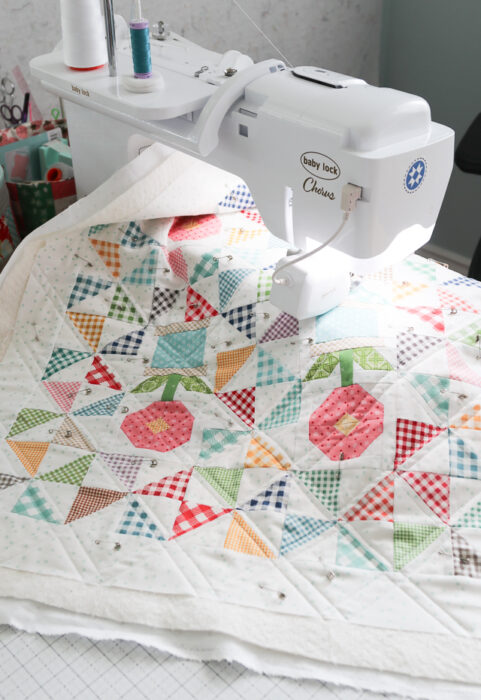
This post is sponsored by Baby Lock Sewing Machines but all thoughts, opinions and commentary are my own. I have been a Baby Lock Ambassador for over 6 years now and have genuinely loved each machine I've worked with.
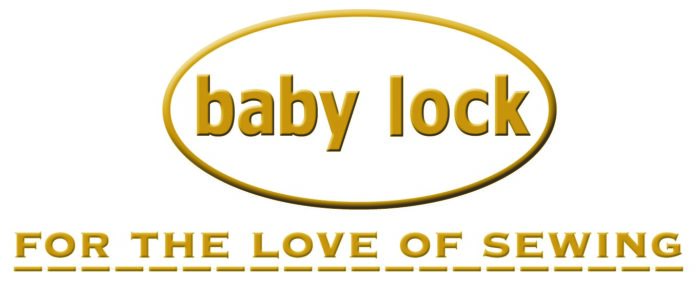
Tips for Straight Line Quilting on your Home Sewing Machine
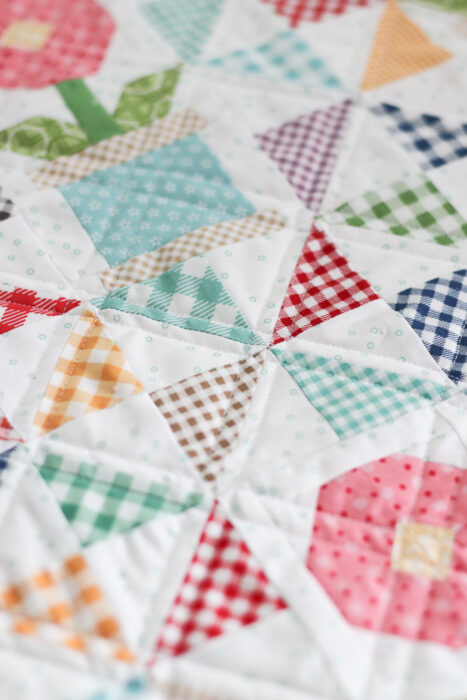
I love straight line quilting because it's fast and, for the most part, mindless. After I prepare my quilt "sandwich" (more on that in a minute) I'm ready to sit and sew! I personally don't love free-motion quilting (because I'm terrible at it - mainly because I lack the patience to practice.) If you want to learn more, there are some great tutorials for free-motion quilting on your home machine here and here. Lots of people do really well with it!
In this post I'll focus on walking you through the steps of machine quilting a mini quilt with straight line quilting.
Preparing Quilt Layers
Begin my making your "quilt sandwich" where you layer the quilt top (front), a layer of batting and and fabric quilt back. I'm using the cute Lori Holt quilt top from this post.
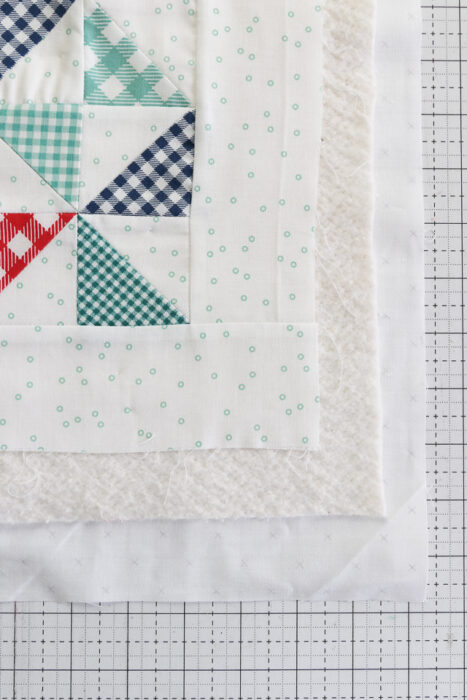
Each layer, working from the back to the front, should be at least an inch bigger all the way around so that you can easily see all three layers from the front as you work. This protects against backing fabric shifting while you're quilting and not having your quilt back cover the whole quilt. (If you're working on a larger scale quilt, I recommend at least 2-3 inches bigger on all sides for each fabric layer.)
I've got lots more information about the different kinds of batting options here. Mini quilts are a great way to use up batting scraps.
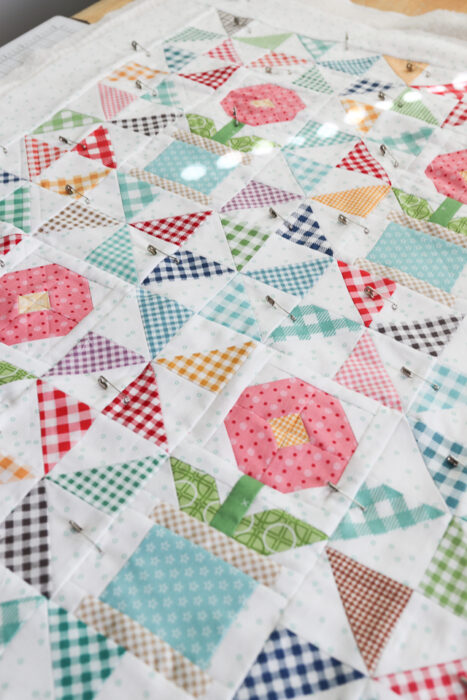
After your layers are prepared, baste the three layers together. There are lots of methods for basting including using spray adhesive, or basting pins. (More basting details and tips here.)
For this project I choose to use basting pins to hold my layers together. Basting pins (as opposed to regular safety pins) are slightly curved to make it easier to pin from the top through all three layers.
After the quilt is basted, decide where you want your quilting lines to go. You can draw or mark lines as a guide, or you can use the seams in the quilt itself as a guide.
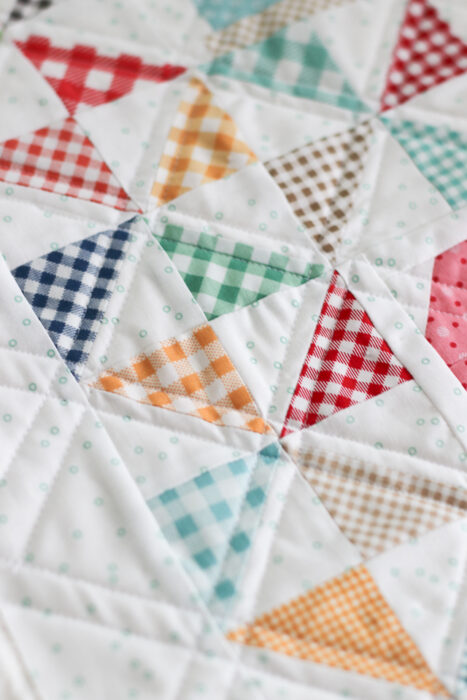
One option is "quilting-in-the-ditch" where you sew a straight line through the actual seams of the pieced quilt blocks. My personal preference is using the piecing seams as a guide, but sewing the quilting line ¼" away from the seams. I feel like it gives the quilt more dimension/interest and texture.

If I have intersecting lines through out the quilt, I simply use the seams as the guide. I decided to quilt this one using the diagonal lines of the half square triangle blocks as my guide. However, there are the 4 flower pot blocks where those seam lines aren't evident. So I used a simple, plastic Hera marker to make a gentle crease in the fabric to use as a guide to continue those diagonal lines.
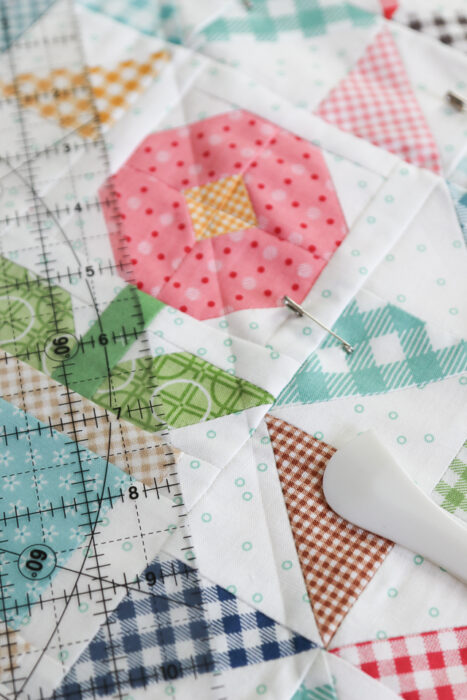
You're now ready to quilt your layers! But before you start, check to see if your machine has a Walking Foot or a Dual-Feed Foot. Either foot will make the quilting process much more effective because they help to grab the top and bottom layers evenly, preventing puckering. That said, there are still some differences between the two options
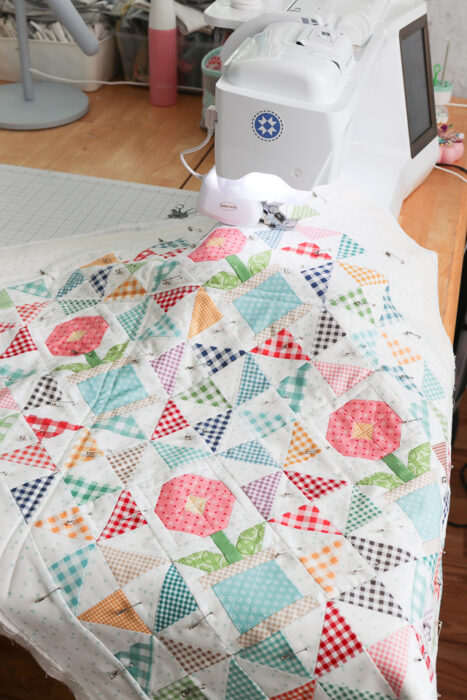
The Difference Between a Walking Foot and a Dual-Feed Foot for Machine Quilting
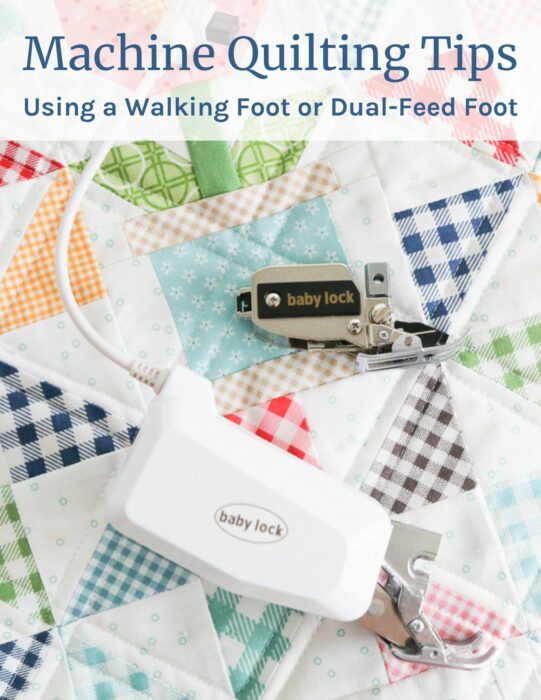
Sewing machine walking feet and dual-feed feet are both useful tools for quilting, but they serve slightly different purposes and have distinct features. Let's compare the two:
Walking Foot
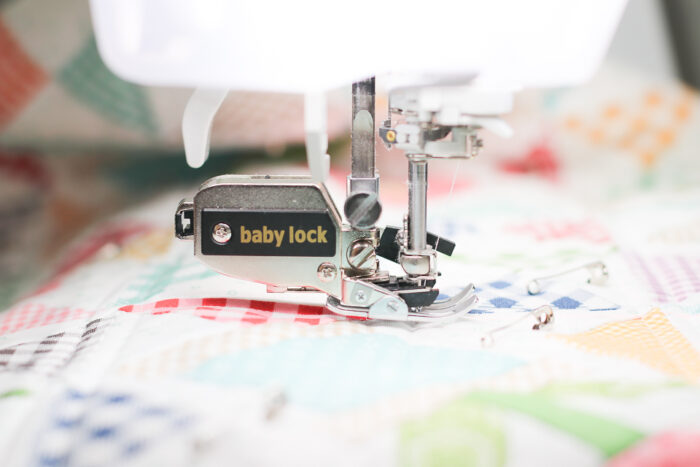
- Function: A walking foot, also known as an even-feed foot, is primarily designed to feed multiple layers of fabric evenly through the machine. It has a set of feed dogs (teeth) on the top of the fabric that work in conjunction with the machine's built-in feed dogs on the bottom. This ensures that the layers of fabric move together, preventing shifting or puckering, making it suitable for quilting straight lines or stitching multiple layers.
- Compatibility: A walking foot can be used on most sewing machines, regardless of whether they have a dual-feed system or not. It's a standalone accessory that attaches to the machine.
- Quilting Applications: Ideal for straight-line quilting, stitching in the ditch, or quilting projects with multiple layers of fabric. It's also great for sewing binding strips onto quilts or when working with slippery fabric.
- Cost and Availability: Generally, walking feet are more widely available for most machines and tend to be less expensive compared to dual-feed feet.
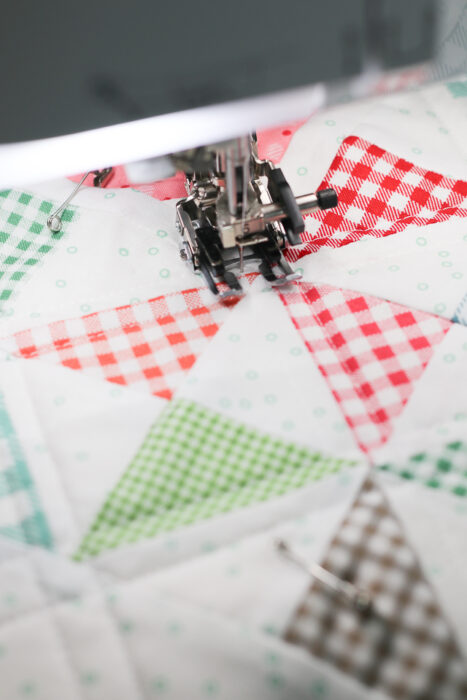
Dual Feed Foot:
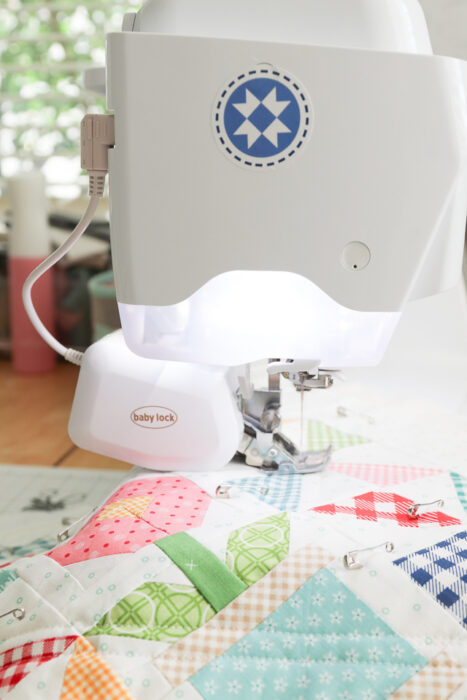
- Function: A dual-feed foot, on the other hand, is designed to work with the machine's built-in dual-feed system, if available. The foot attaches like a regular foot but also has a chord with a plug attachment that plugs into the machine itself.
- It essentially functions as an extension of the machine's feed dogs, providing even fabric feeding from the top. Dual-feed systems are especially helpful when quilting, as they aid in handling multiple layers of fabric without the need for a walking foot.
- Compatibility: A dual-feed foot is typically designed to work with sewing machines that have a built-in dual-feed system. Not all sewing machines have this feature, so you may need to purchase a compatible machine or an additional dual-feed foot.

- Quilting Applications: Works well for a wide range of quilting techniques, including free-motion quilting and stippling. It provides better control when working with intricate quilting designs and allows for smoother fabric movement.
- Cost and Availability: Dual-feed feet are more specialized and might be harder to find for certain sewing machine models. They are often more expensive due to their compatibility with specific machines.
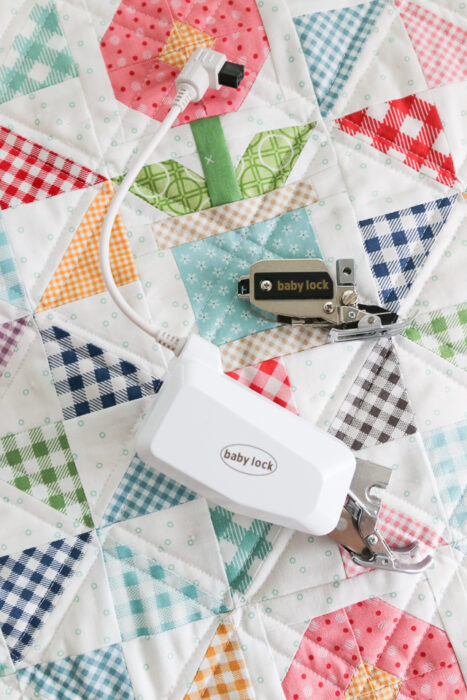
In summary, both walking feet and dual-feed feet have their unique advantages in quilting. Your choice between the two will depend on your sewing machine's capabilities, your quilting needs, and your budget. If your sewing machine has a built-in dual-feed system, a dual-feed foot will be a more convenient option. And is usually included with your machine. In this case no need to buy an additional walking foot. For example, my Chorus model machine comes with a Dual Feed Foot attachment and compatibility.
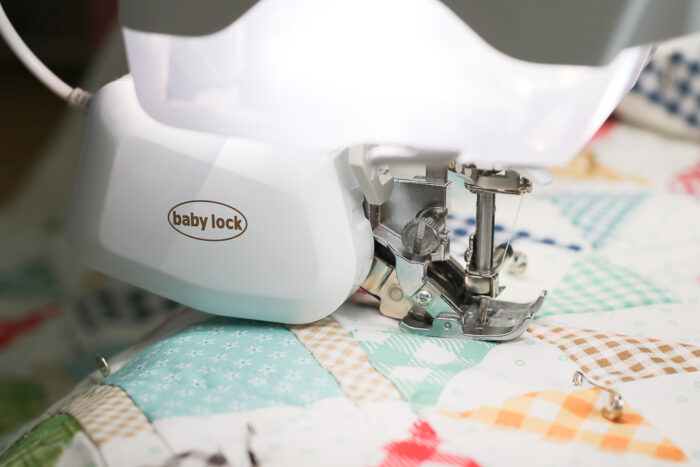
If your machine doesn't have a built-in dual-feed system, a walking foot is a versatile and cost-effective choice and a great investment for your sewing machine. I use a walking foot if sewing on my smaller and more portable Jubilant model.
Buying a walking foot may feel like a bit of an investment, but I promise that it's one that pays off! When I bought my first walking foot 20 years ago it felt like a big stretch for my budget. But I used that foot All. The. Time.
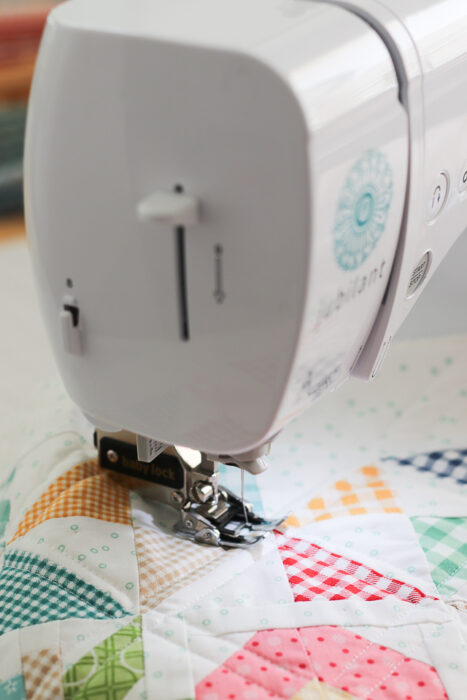
I highly recommend investing in this very useful tool. As mentioned, a walking-foot is not only great for quilting but also sewing a binding to the finished quilt as well as working with slippery fabrics like velvet or corduroy. There are lots of times you'll be glad you have a walking foot on hand.
Important: Make sure you get the right walking foot for your machine model.
If you have a Baby Lock compatible machine I recommend the Baby Lock Dynamic Walking foot over the original walking foot. It's a bit of a cost increase, but it runs much quieter and smoother.
Check with your Sewing Machine manufacturer to find what options are available for your specific machine. Your local sewing machine dealer is a GREAT resource for information and finding the right accessories for your machine. You can find your nearest Baby Lock machine dealer here.
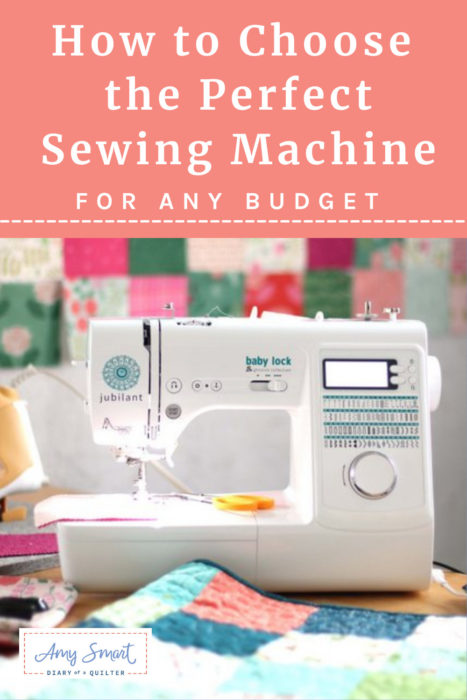
I've also got suggestions if you're looking for the right sewing machine for your budget and needs.
I'll be back later this month or so to talk about tips for machine binding your quilt.
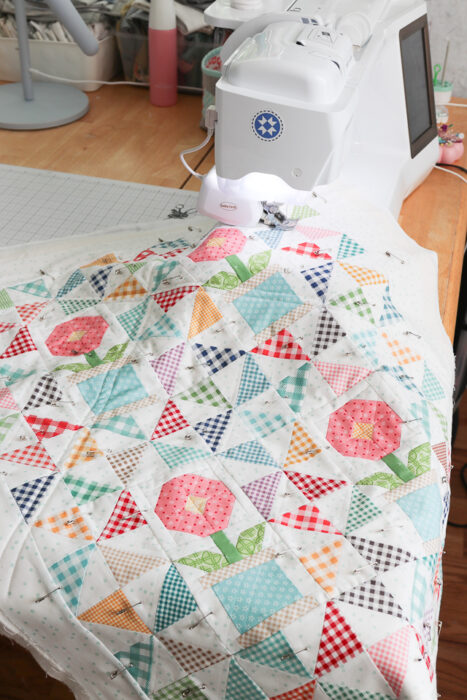
And I've got more tips for machine quilting straight line quilting tips including bobbins, stitch length and other machine accessories here.
The Quilt I'm Working On
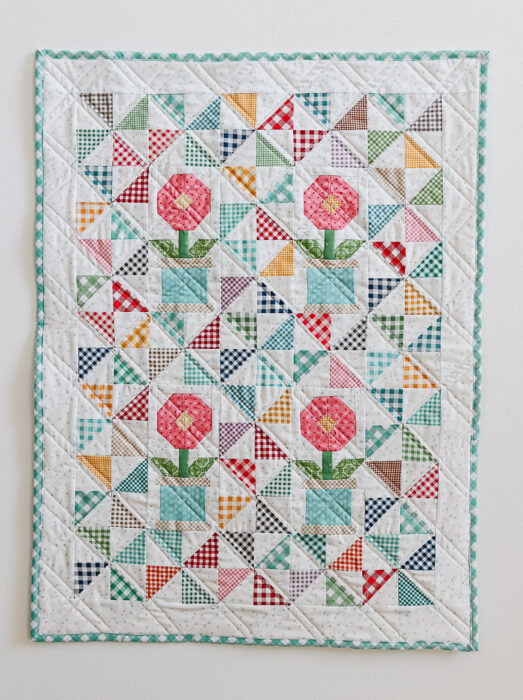
This Lori Holt Gingham Flower Pots mini quilt (24″ x 32″) featuring Lori Holt’s Gingham + Basics collections is an kit exclusive to Baby Lock.

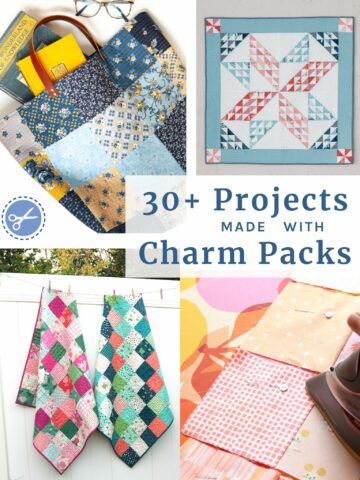
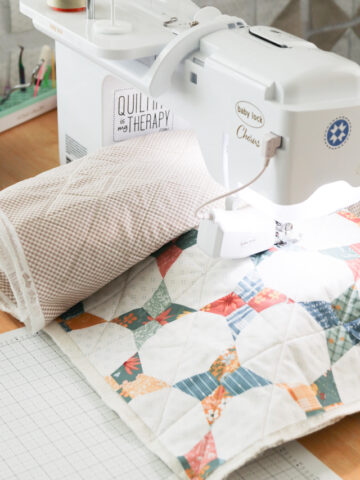
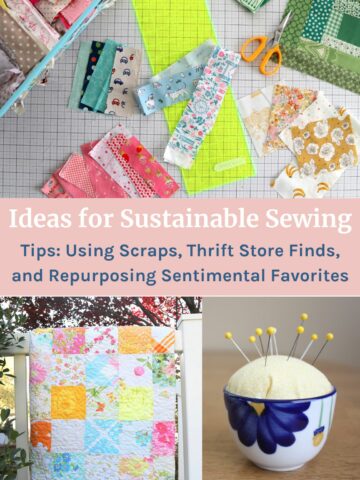
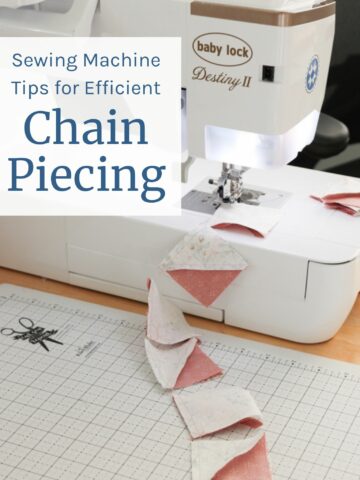
Bev
Thank you. I found that very interesting.
Nora Cully
I had no idea there was a difference between a walking foot and dual/even feed foot. Thanks for the info!